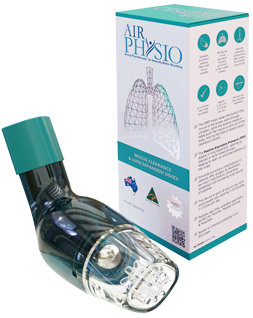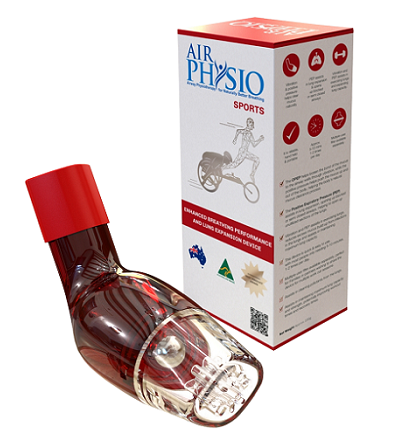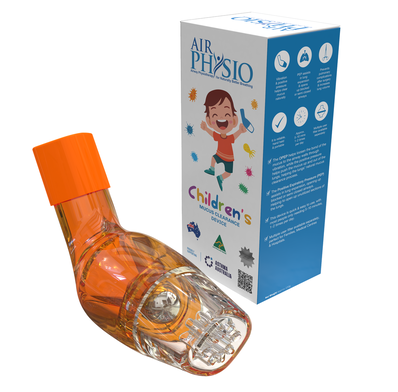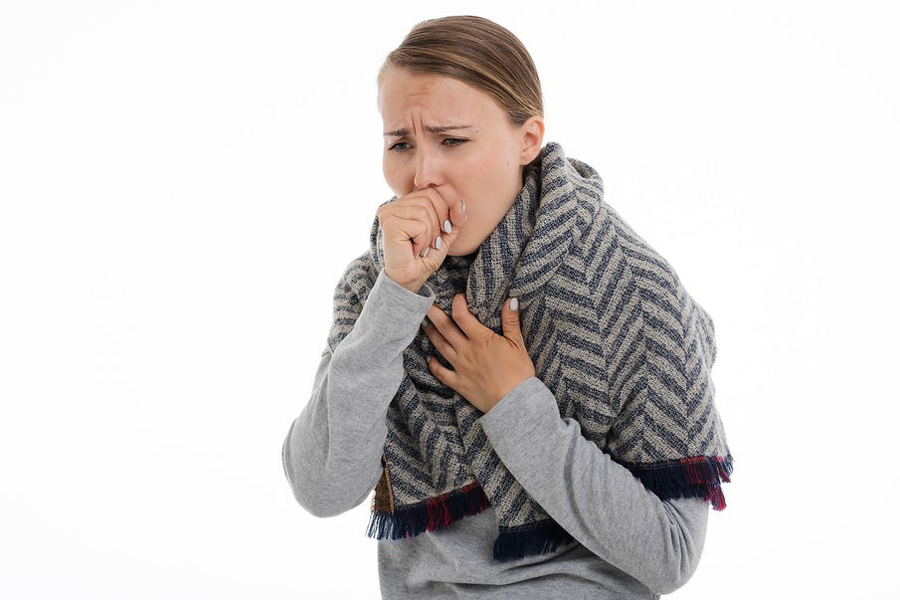What Does an Asthma Attack Feel Like? How to Identify an Asthma Attack
It’s a no-brainer that your airways are solely responsible for transporting air to and from your lungs, so what happens when they fail to function properly? Statistics show that asthma is a severe condition that impacts more than 24 million people in the US, including more than 6 million children. It constricts the airways, preventing air from getting to the lungs, ushering in dangerous and uncomfortable symptoms.
While for some, asthma symptoms are an inconvenience, for others, it triggers life-threatening attacks that can interfere with their day-to-day. In this guide, we’ll answer the most commonly asked question, ‘what does an asthma attack feel like?’ and much more.
What Is Asthma?
Impacting millions of people in the US, asthma is a relatively common medical condition and occurs more frequently in families suffering from allergies. Although there’s no cure for the condition, it must be managed strictly. Asthmatic episodes can come and go, and when a person is having an attack, their breathing is normal. Different triggers lead to an asthmatic person having an episode, during which they’ll experience the following asthmatic symptoms:
Constricted Airways
The muscles on either side of the airway contract to narrow it. An asthmatic person takes medication to relax their airways to effectively manage the condition, making it physically easier to breathe.
The Airways Thicken And Fill Up
The inner lining of the airways may swell which means you have less available space through which to pass air. Medication controls inflammation when this occurs. Moreover, there’s the likelihood of the airways filling up with mucus.
What Are The Sings And Symptoms Of Asthma?

The telltale sign of asthma is a wheezing sound stemming from your chest with every breath you take. You may also experience noticeable shortness of breath, being unable to get sufficient oxygen, coughing, and chest tightness.
One of the most common symptoms during an asthma attack is the inability to speak due to interruptions in your breathing. A multitude of patients discovers that various triggers can lead to an asthma attack, such as:
- Dust
- Cigarette Smoke
- Air Pollutants Such As Smoke
- Perfume
- Animal Fur
- Cold Air
- Stress And Strong Emotions
- Medications Such As Aspirin, Beta-Blockers, Anti-Inflammatory Drugs Such As Naproxen Sodium (Aleve) And Ibuprofen (Motrin IB And Advil)
- Airborne Allergens, Such As Pet Dander, Mold Spores, Particles Of Cockroach Waste, Pollen, And Dust Mites
- The Common Cold And Other Respiratory Infection
- Preservatives And Sulfites Added To Certain Beverages And Foods Such As Wine, Processed Potatoes, Shrimp, Beer, And Dried Fruit
Gastroesophageal Reflux Disease (GERD) –A Condition Whereby Acids In The Stomach Back Up Into Your Throat
- Physical Activity
Risk Factors
A myriad of risk factors is believed to increase your susceptibility to asthma. They include:
- Having Blood Relatives With Asthma, Such As Siblings Or Parents
- Exposure To Occupational Triggers Such As Chemicals Used In Hairdressing, Manufacturing, And Farming
- Being Overweight Or Obese
- Exposure To Secondhand Smoke
- Having An Allergic Condition Such As Atopic Dermatitis That Triggers Itchy, Flaky, Red Skin, Or Hay Fever That Causes Itchy Eyes, A Runny Nose, And Chest Congestion
- Frequent Smoking
- Exposure To Exhaust Fumes And Other Types Of Pollution
How Is Asthma Diagnosed?
To diagnose asthma, a healthcare provider will review your family history, medical history, and symptoms before conducting a physical exam. During the checkup, they’ll focus on your lungs and heart. They may also order a chest x-ray, blood, allergy, and breathing tests. The results will tell the provider whether or not you have asthma and identify underlying conditions that may be contributing to your symptoms.
What Is An Asthma Flare-Up?
An asthma flare-up is when the symptoms are more adverse than usual. These flare-ups are more chronic asthma attacks that typically don’t self-resolve and call for enhanced treatment.
An asthma flare-up can quickly spiral out of control or worsen over time. However, it’s essential to seek treatment as soon as possible.
Severe asthma can be characterized as:
- Feeling Frightened Or Restless
- A Racing Pulse
- Unresponsiveness To The Use Of Your Inhaler
- Blue Nails Or Fingertips
- Constant And Adverse Asthma Symptoms
Complications
Asthma complications include:
- Hospitalizations And Emergency Room Visits For Adverse Attacks
- Sick Days From School Or Work Due To Flare-Ups
- Side Effects From Long-Term Use Of Some Medications To Control Chronic Asthma
- Symptoms And Signs That Affect Work, Sleep, And Other Activities
- A Permanent Narrowing Of The Bronchial Tubes That Transport Air To And From Your Lungs, Affecting How Well You Can Breathe
The ideal treatment makes all the difference in curbing long-term and short-term complications triggered by asthma.
What To Do During An Asthma Attack
Given that the symptoms of an asthma attack may crop up quickly, it helps to be prepared. If this occurs, you may experience:
- The Need To Use Your Inhaler Every Two To Three Hours
- An Increase In Chest Tightness, Shortness Of Breath, Wheezing, Or Coughing
- Being Woken At Night Due To Asthma Symptoms
Now that you know the answer to the frequently asked question, ‘what does an asthma attack feel like?’ if you or someone you’re with is experiencing it, call an ambulance or head over to the nearest clinic.
If you notice the fingertips turning blue, rapidly debilitating asthma symptoms, difficulty breathing, or not improving from the use of an inhaler, you should call for emergency assistance.
Who Does Asthma Affect?
It can impact anyone at any age. Asthma may suddenly occur in your adulthood or begin in childhood, and its cause remains unknown. The condition is the leading cause behind childhood hospital admissions. Although it impacts more boys in primary school, it’s more likely to affect females in their teenage years.
Studies have shown that pregnant mothers who smoke are more likely to have children who develop asthma. Adults and children residing in areas with high levels of chemical exposure and air pollution are more susceptible to experiencing adverse asthma attacks or symptoms. The condition is more likely to impact people from socio-economically disadvantaged backgrounds.
Here are the most common types of asthma:
Allergic:-
It Refers To Asthma That Is Triggered By The Same Substances That Cause Allergy Symptoms. Allergies Are Caused When The Immune System Mistakes Pollen And Other Harmless Substances As Dangerous. The Body Then Produces Chemicals To Attack These Substances. Allergies That Affect The Lungs Can Result In Difficulty Breathing, Wheezing, And Other Asthma Symptoms.
Non-Allergic:-
Also Known As Non-Atopic Asthma, It’s Not Related To Allergy Triggers Such As Dust Or Pollen. It’s Not As Common As Allergic Asthma. Although The Causes Aren’t Well-Known Non-Allergic Asthma Develops Later In Life And Can Be More Adverse.
Occupational:-
It Stems From The Work You Do And Is A Type Of Allergic Asthma. For Instance, If You Work In A Healthcare Facility, The Dust From Latex Gloves Can Trigger Symptoms. Alternatively, If You Work In A Bakery, You Might Be Allergic To Flour. You Might Be Suffering From Occupational Asthma If Your Symptoms Alleviate On The Days You’re Not At Work Or Began As An Adult.
Exercise-Induced:-
It’s Also Known As Exercise-Induced Bronchoconstriction (EIB). The Reason Is That The Narrowing And Tightening Of The Airways (Bronchoconstriction) Don’t Stem From Having Asthma. Exercise-Induced Asthma Usually Impacts People Doing Strenuous Workouts In Extremely Cold Conditions Or Professional Athletes.
Nocturnal:-
Defined As The Exacerbation Of Asthma At Night, Nocturnal Asthma Is Associated With The Need For Medication Due To An Increase In Symptoms And Deteriorating Lung Function.
Prevention
Although there’s no way to prevent asthma, you and your healthcare provider can formulate a step-by-step action plan to live with the condition and prevent attacks.
Follow Your Action Plan
Once you come up with a foolproof healthcare plan with your doctor that entails management strategies and taking medications, ensures you follow it to the letter. As an ongoing condition that calls for frequent treatment and monitoring, managing your asthma can make you feel more in control of your life.
Pneumonia And Influenza Vaccinations
Staying up-to-date with vaccinations can prevent pneumonia and influenza, which trigger asthma flare-ups.
Identify And Avoid Triggers
A boatload of irritants and allergens can cause asthma attacks. Identify what worsens or triggers your asthma and steer clear of them.
Monitor Your Breathing
You may recognize the warning signs of an impending asthma attack, for instance, shortness of breath, slight coughing, or wheezing. Given that your lung function may decrease before you notice any symptoms or signs, use a peak flow meter to measure your peak airflow. The meter measures how hard you can exhale.
Take Your Medication As Prescribed
Avoid switching your medication before consulting your doctor, even when you notice improvement with your asthma. Bringing your medications along with each doctor’s visit is wise. Your doctor can ensure you’re using the medications as they should.
Pay Attention To Improved Quick-Relief Inhaler Use
If you’re relying on your quick-relief inhaler every couple of hours, your asthma isn’t under control, so consult your doctor for treatment adjustment.
The Takeaway
Although we’ve covered the ins and outs of asthma, keep in mind that this information isn’t intended to substitute a healthcare professional’s advice. Always consult your doctor before making decisions about your health.
Average Lung AirPhysio
ENJOY BETTER BREATHING - Use this 100% Drug Free Device - AIRPHYSIO

Recent Posts
Sports AirPhysio
IMPROVE YOUR SPORTING PERFORMANCE - Use this 100% Drug Free Device - AIRPHYSIO

AirPhysio Child
BETTER BREATHING FOR YOUR CHILD - Use this 100% Drug Free Device - AIRPHYSIO

Categories
- asthma (2)
- atelectasis (2)
- bronchiectasis (2)
- copd (3)
- cystic-fibrosis (45)
- featured (10)
- uncategorized (2)


